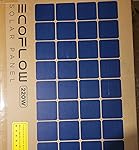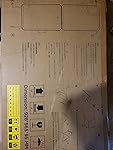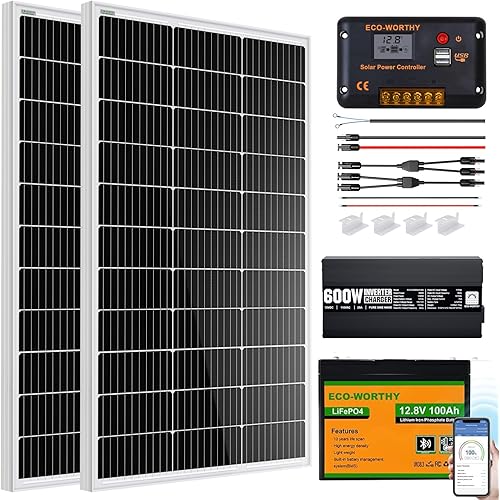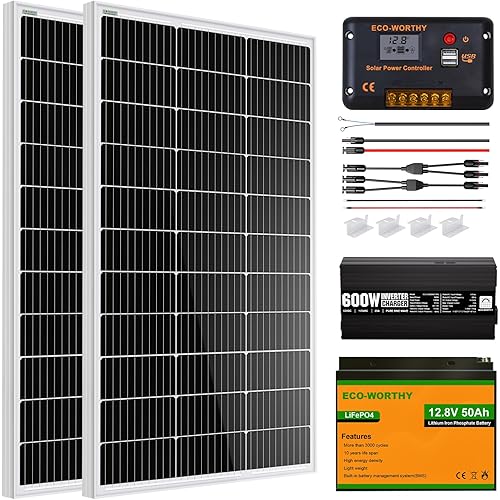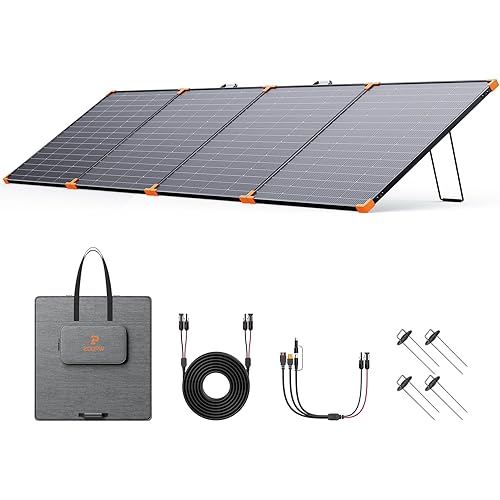EF ECOFLOW 220W Portable Solar Panel, Bifacial Design Up to 25% Conversion Efficiency N-Type Solar Cell, with Adjustable Kickstand, IP68 Waterproof, Foldable Solar Panel for Camping RVing Home Backup










Buy Now, Pay Later
- – Up to 36-month term if approved
- – No impact on credit
- – Instant approval decision
- – Secure and straightforward checkout
Ready to go? Add this product to your cart and select a plan during checkout.
Payment plans are offered through our trusted finance partners Klarna, Affirm, Afterpay, Apple Pay, and PayTomorrow. No-credit-needed leasing options through Acima may also be available at checkout.
Learn more about financing & leasing here.
Selected Option
Returnable until Jan 31, 2026
To qualify for a full refund, items must be returned in their original, unused condition. If an item is returned in a used, damaged, or materially different state, you may be granted a partial refund.
To initiate a return, please visit our Returns Center.
View our full returns policy here.
Recently Viewed
Size: 220W Solar Panel
Features
- [High-Efficiency Solar Panel] With the portable solar panel industry's first use of N-Type solar technology, we've raised the bar on conversion efficiency, reaching 25%. Charge faster with a more compact panel. With its dual-sided design, collect up to 28% more energy, perfect for camping and other outdoor activities.
- [Adjustable and Versatile] The 220W bifacial solar panel is designed with a 30-60 adjustable angle bracket and an integrated solar angle guide, to keep sunlight at a 90 angle to capture the most energy possible.
- [Durable and Robust] Our portable solar panel boasts an IP68 rating, protecting against water and dust, making it an ideal choice for reliable energy source in diverse environments. The ETFE coating ensures the 220W solar panel is built to last, offering extended longevity and resistance against harsh weather conditions.
- [Compact and Portable] With a weight of only 15.4 lb, the foldable solar panel is ultra-lightweight and compact. It's perfect for on-the-go use, whether you're trekking, camping, or on a roadtrip.
- [Fast Green Charging] When connected to an EcoFlow power station, the 220W bifacial solar panel is geared for maximum efficiency. The solar panel has a high energy conversion rate of up to 25% thanks to N-Type solar cells.
- [What's in the Box] EcoFlow 220W Bifacial Portable Solar Panel, MC4 to XT60i Charging Cable, Protective Bag, Quick Start Guide, Safety Instructions & Warranty Card.
Brand: EF ECOFLOW
Material: Ethylene Tetrafluoro Ethylene,Tempered Glass
Product Dimensions: 23.2"L x 24.2"W x 1.3"H
Item Weight: 7 Kilograms
Efficiency: 25%
Brand: EF ECOFLOW
Material: Ethylene Tetrafluoro Ethylene,Tempered Glass
Product Dimensions: 23.2"L x 24.2"W x 1.3"H
Item Weight: 7 Kilograms
Efficiency: 25%
Included Components: Bag
Maximum Voltage: 21.5 Volts
Maximum Power: 220 Watts
Special Feature: Bifacial design, high conversion efficiency, adjustable angle, IP68 waterproof rating, foldable design
UPC: 842783146786
Manufacturer: EF ECOFLOW
Part Number: 220W-Bifacial-SP
Item Weight: 15.4 pounds
Item model number: 220w solar panel
Size: 220W Solar Panel
Color: Black
Style: Compact
Power Source: solar_powered
Wattage: 220 watts
Item Package Quantity: 1
Special Features: Bifacial design, high conversion efficiency, adjustable angle, IP68 waterproof rating, foldable design
Batteries Included?: No
Batteries Required?: No
Date First Available: February 28, 2022
Frequently asked questions
To initiate a return, please visit our Returns Center.
View our full returns policy here.
- Klarna Financing
- Affirm Pay in 4
- Affirm Financing
- Afterpay Financing
- PayTomorrow Financing
- Financing through Apple Pay
Learn more about financing & leasing here.
Similar Products
Top Amazon Reviews




